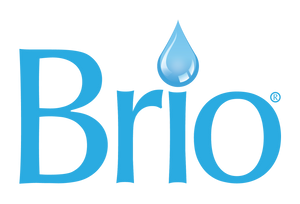By Sheila Anthony
Heatstroke is one of three heat-related illnesses. The other two are heat cramps and heat exhaustion. Although heatstroke is the most dangerous of the three, it’s important to understand that heat cramps and heat exhaustion are early warning signs of it.
Understanding heat cramps
Profuse sweating caused by physical activity in high temperatures or prolonged exposure to excessive heat can result in painful spasms, typically in the muscles of the calves, arms, abdomen, and back. While sweating is necessary to cool the body, it also results in the loss of fluid and electrolytes. Electrolytes are essential minerals, like sodium, calcium, and potassium, that regulate muscle contractions and help control the nervous system.
If you’re experiencing heat cramps, stop doing what you’re doing immediately. You need to get out of the heat and cool down. Sip cool water, coconut water, or a sports drink to replenish lost fluid and electrolytes.
When you’ve sufficiently cooled down, try gently stretching and massaging the muscles that are spasming. If the contractions don’t go away within an hour or so, contact your doctor.
Heat exhaustion? Or heatstroke?
The symptoms for both can include nausea, dizziness, weakness, warm and dry skin, rapid heart rate, fever of 104°F or higher, and headache.
If you’re experiencing any of the above, you may have heat exhaustion. You must move (or be moved) to a cool place immediately and sip cool water or sports drinks. Loosen your clothing and either mist yourself with cool water or place cool, wet cloths or towels on your body. If it’s safe to do so, take a cool bath. If you vomit or if the symptoms don’t improve within an hour or get worse, seek medical attention immediately.
Along with the symptoms for heat exhaustion, heatstroke also includes confusion, seizures, loss of consciousness, or all three. The body’s internal temperature is so high, it can no longer cool itself.
This is now a life-threatening medical emergency, and the victim must be treated by a physician. If you suspect someone of having heatstroke, immediately call for an ambulance. Left untreated, heatstroke can be lethal. It can also permanently damage the brain and internal organs of those who survive it if they’re not treated quickly enough.
While waiting for help to arrive, cool the victim as much as possible. Remove excess clothing from them. Soak their skin with cool water, then fan. Place ice packs around the neck, under the armpits, and in the groin area. Only place the person in a cool bath if they are conscious and can be continuously monitored. If they suffer a seizure or lose consciousness, being in a tub of water could be fatal. Allow them to sip water only if they are safely able to do so.
On average, there are 702 heat-related deaths annually in the United States, so protecting yourself during the hottest time of the year is vital.
Staying out of the heatstroke zone
The good news is heatstroke is almost always preventable. It’s just a matter of taking the proper precautions. If at all possible, avoid the worst heat of the day by seeking out a cool location. If you don’t have air-conditioning at home, try a movie theater, public library, or local cooling center. Wear lightweight and light-colored clothing. And stay hydrated. In fact, staying well hydrated is one of the best ways to help prevent all three heat-related illnesses.
The Brio Moderna 3-Stage Countertop Water Cooler comes in a durable and modern stainless steel design and offers three premium-filtration stages that significantly reduce harmful contaminants in your drinking water, while preserving important electrolytes like calcium and magnesium. With the Moderna, you can also preset the dispensing temperatures for both the hot and cold water, so can enjoy the water temperature you like.
Always keep a refillable bottle of cool, refreshing, purified water on hand as you go forth and enjoy the height of this glorious summer.




